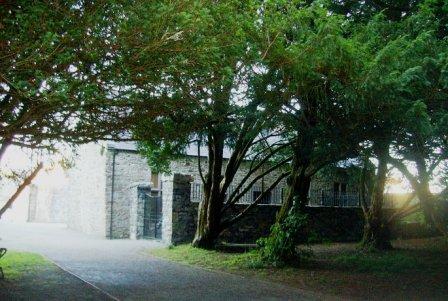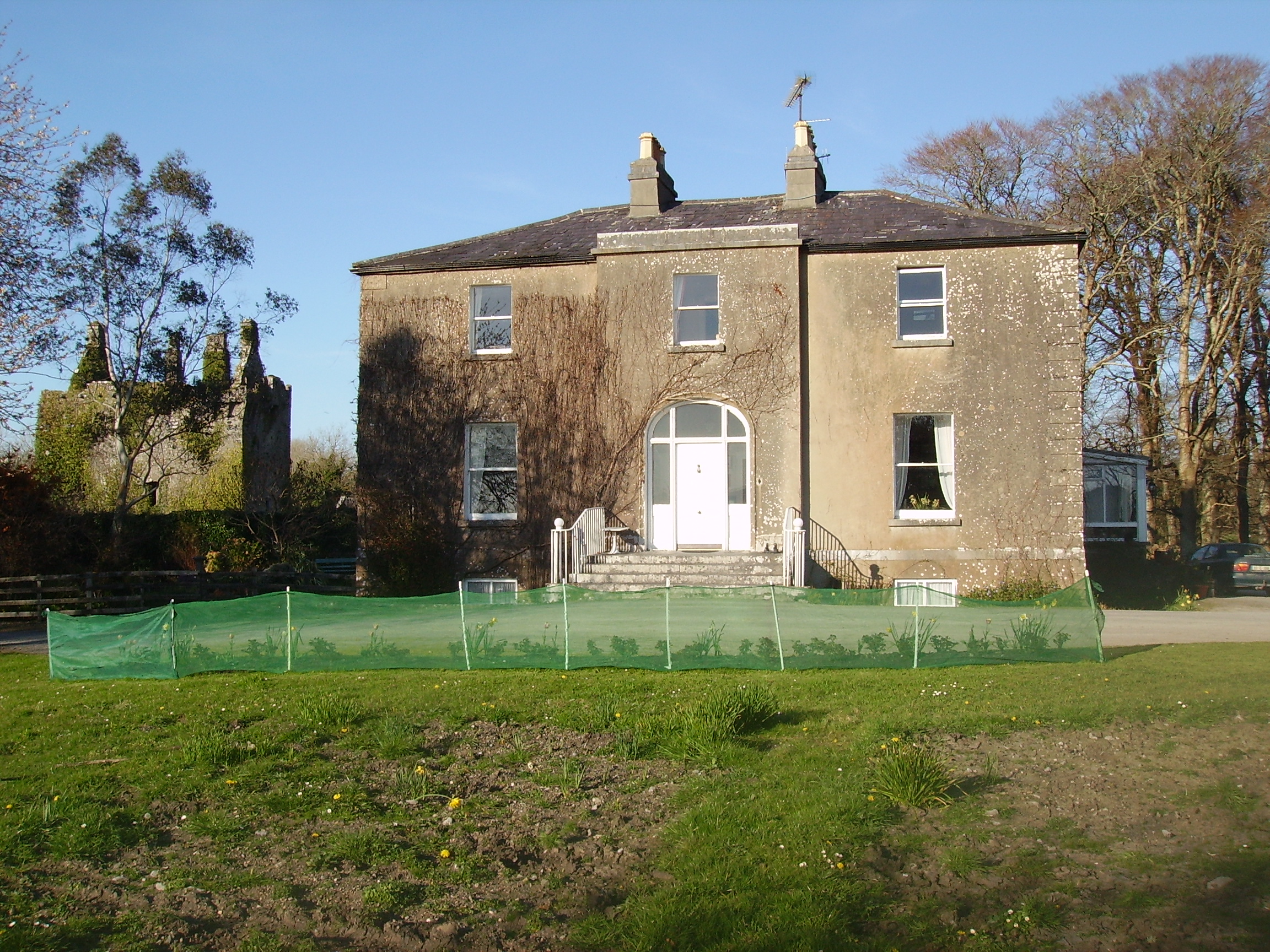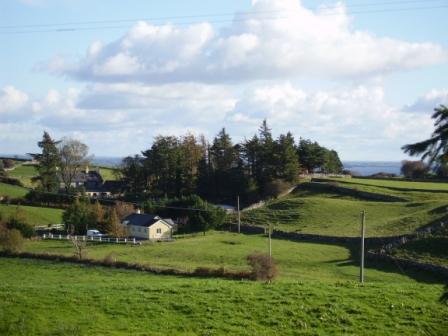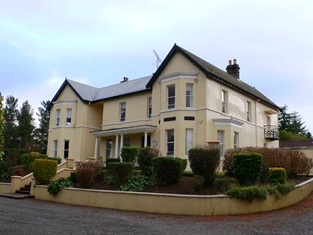Fairhill
Houses within 10km of this house
Displaying 22 houses.
Houses within 10km of Fairhill
Displaying 22 houses.
| House name | Description | |
|---|---|---|
| Garracloon | Wilson refers to Garracloon as the seat of Mr. Blake in 1786. In 1814 the house was occupied by the Reverend Cecil Crampton, rector of the parish of Cong. At the time of the first Ordnance Survey in 1838 Garracloon house was recorded as a ruin. At the time of Griffith's Valuation, it was held in fee by Joseph Blake and valued at £8. The house was later rebuilt, Ruane refers to the ruined Victorian Garracloon House. Sir William Wilde refers to Colonel Veitch at Garracloon. No longer extant but yard buildings remain. |

|
| Dowagh | Another home of the Blakes of Garracloon. It was lived in by Mark Blake a younger brother of Manus Blake of Garracloon, until his death in 1817. At the time of the Ordnance Survey 1838 it was described as a 'beautiful little place' the residence of Mr Blake. Held by Isaac Mayne, from Henrietta Blake at the time of Griffith's Valuation. The building still retains its thatched roof and is occupied. |

|
| Strandhill | A 2 storey thatched house on the shore of Lough Corrib and situated opposite Ashford Castle, home of the Elwood family. In the late 18th century it was let to the Ireland family and in the mid 19th century to the Lynchs of Ballycurrin. The house was used as the home of the Widow Tolan in the film 'The Quiet Man' made in 1951 and was knocked down in the 1970s. It is associated with the recorder of Japanese folklore, Lafcadio Hearn, who spent a childhood holiday at Strandhill with his aunt Mrs Elwood. |

|
| Kinlough | A house on the shore of Lough Corrib, facing Ashford Castle and lived in by Patrick Moran in the 1860s and 1870s, now a ruin. |

|
| Ballymacgibbon House | The home of the Fynn family in the 18th and 19th centuries. It was held in fee by Jane Finn at the time of Griffith's Valuation, when it was valued at £20. It is now an ivy covered ruin. |

|
| Abbey House | George McNamara inhabited a house in the grounds of Cong Abbey in the 18th century but Sir William Wilde refers to only a fragment of this house remaining in 1867. Alexander Lambert also lived in a house in the Abbey grounds. Wilde describes this house as follows "More to the west there recently existed the residence of the late proprietor, A.C. Lambert Esq., constructed of the unhewn, weather-worn, but square stones, collected in the locality. Being no longer required, and not being quite congruous with the scene, it has been removed". The remains of this building are now used by the Board of Works. |

|
| Castletown | A branch of the Ellison family was living at Castletown in the 1770s and Wilson notes it as the seat of Mr. Ellison in 1786. The sale rental for the D'Arcy estate in the Encumbered Estates' Court in November 1852 refers to a small house on the property, which could be adapted as a fishing or shooting lodge. Lewis Strachan occupied the house at the time of Griffith's Valuation. A few walls of the house still remain. |

|
| Lackafinna | A house built in the 1840s close to the shore of Lough Corrib and occupied by Ormsby Elwood, brother in law of Dr Watkins Roberts. The house was renovated in 2004 and is now a family home. | |
| Lough Mask House | This house was constructed in the early 1840s when Ormsby Elwood was agent to the Earl of Erne. Robert Fair was occupying the house, valued at £10, at the time of Griffith's Valuation and would appear to have taken over as agent to Lord Erne. In the autumn of 1880 Lough Mask House was the scene of the first boycotting incident when Charles Boycott was the agent for the estate. By the mid 1880s Bernard Daly had bought Boycott's lease of the house and farm and his descendants continue to live at Lough Mask. |

|
| Moytura | Built in 1865 as a home of Sir William Wilde, father of Oscar Wilde. Still extant and well maintained. | |
| The Neale | An early 18th century house, with a number of follies designed by Lord Charlemont. Wilson refers to it as "the superb and beautiful seat of Sir John Browne" in 1786. It was occupied by the Reverend James Cromie, brother-in-law of the 2nd Baron and his family, for most of the first half of the 19th century. The house was valued at £25 at the time of Griffith's Valuation. It was sold in the 1930s and most of the house is now demolished. |

|
| Doon | Built circa 1806, John Smyth occupied Doone Lodge in 1814. By the mid 19th century Doon was a Blake residence and was later used as a shooting lodge by the Guinness family. It was offered for sale in 1939 with the rest of the Guinness estate. The house was the home of the Earl of Mayo in the latter part of the 20th century. Extensively renovated in 2006 by the present owner. |

|
| Ebor Hall | A house built before Griffith's Valuation by Deputy Commissary General Booth on land leased from the Provost and Fellows of Trinity College, Dublin. Booth later sold his interest to Lord Mountmorres who was murdered nearby in 1880. In 1885 Walford refers to it as the seat of Joseph Skerrett Blake. It belonged to the Boyd family for much of the 20th century. Extensively renovated in the late 20th century, it is now a well maintained residence on the shore of Lough Corrib. |

|
| Ashford Castle | Originally a shooting lodge, in the style of a French chateux, built on the shore of Lough Corrib by the Browne family of Castlemagarret and occupied in the late 18th century by a branch of that family. Thomas Elwood was agent for the Brownes in the early 19th century and is recorded as the occupier in 1814. Sold after the Famine to Benjamin Guinness. His son Arthur Lord Ardilaun expanded the building in the style of a Gothic castle. Sold by the Guinness family in 1939 the castle now functions as a world famous hotel. |

|
| Gortnarup | A Joyce residence at the beginning of the 19th century. Gortnarup House is marked on the first edition Ordnance Survey map. |

|
| Rosshill | Rosshill House was the home of the Bermingham family in the 18th century and was noted by Wilson in 1786. It gradually declined during the 19th century and only one wing of it was still standing in 1865. The Guinness family of Ashford Castle bought Rosshill and much of the surrounding locality. No part of the house now remains but a portion of the stable block is still extant. |

|
| Petersburg | An early 18th century house, the seat of the Lynch family in the 18th and 19th centuries. Wilson refers to it as the seat of Mr. Lynch on the shore of Lough Mask in 1786. In 1986 the house and immediate surrounds were vested in the county Galway Vocational Education Committee. The house and yard buildings have been completely renovated and now function as an Outdoor Education Centre. |

|
| Benlevy Lodge | A lodge situated close to the shore of Lough Mask and to the Lynch's house at Petersburg. Ocuppied by J. Blake in 1837 and by the Reverend E.G.O'Grady at the time of Griffith's Valuation. The remains of the lodge are still visible. |

|
| Currarevagh | At the time of Griffith's Valuation, Henry Hodgson owned the townland of Currarevagh and occupied the house there, then valued at £5. The existing house was built in the mid 19th century and is still owned by the Hodgson family who run it as a guest house. |

|
| Blake Hill | A house on the estate of the Provost and Fellows of Trinity College, Dublin, occupied by the Blakes of Menlo in the late 18th century/early 19th century. Thomas Blake of Brendrum, county Galway, married Mary Lynch, granddaughter of Sir Roebuck Lynch Blosse, 2nd baronet, and they were the parents of the 9th and 10th Blake of Menlo baronets. By the time of Griffith's Valuation the most valuable house in the townland of Breandrim was a herd's house of £4.15 occupied by C. B. Kenny. On the 25-inch edition Ordnance Survey map of the 1890s Breandrim House is recorded as "in ruins". Old yard walls remain at this site. |

|
| Lisloughrey | This house is not marked on the first edition Ordnance Survey map but was built by the time Sir William Wilde's book on Lough Corrib was published in 1867. It was then occupied by William Burke, agent to Benjamin Lee Guinness. Occupied at the time of the 1901 census by Francis Turnly of Drumnasole, Garronpoint, Co Antrim, who was then agent to the Ashford estate. In the late 20th century the home of Rory Murphy manager of Ashford Castle Hotel. The building has now been greatly expanded and functions as a hotel http://www.lisloughreylodge.com | |
| Gortdrishagh House | The National Inventory of Architectural Heritage indicates that this house was built in the latter part of the nineteenth century. At the time of Griffith's Valuation, James O'Connor was leasing offices and land at Gortdrishagh from the Law Life Assurance Company. |

|

